Author: Zeng Lu
Official development assistance has provided significant support to developing countries in past crises. The dual crises of the COVID-19 epidemic and the Russia-Ukraine conflict have had serious impacts and chain reactions around the world. During the COVID-19 epidemic and the Russia-Ukraine conflict, official development assistance provided important support to developing countries, but it also suffered a huge impact.
In 2022, the Development Assistance Committee of the OECD (OECD DAC) released a report "How the COVID-19 Epidemic and the Russia-Ukraine Conflict Are Reshaping Official Development Assistance", which sorted out the huge impact of the two major crises of the epidemic and the Russia-Ukraine conflict on official development assistance (ODA). impact. Today we take a look at how two major crises are reshaping official development assistance in ten charts.
The COVID-19 pandemic has caused serious poverty, hunger, conflict and economic impacts around the world, leading to a significant increase in the demand for development assistance in developing countries. The Russia-Ukraine conflict that broke out in early 2021 triggered chain reactions such as food and energy crises and rising inflation, and dragged down global recovery. Furthermore, the sharp rise in aid to Ukraine has implications for the scale of ODA available for other developing countries and challenges.
Epidemic-induced demand far exceeds growth in official development assistance
The COVID-19 pandemic has pushed official development assistance to a record high.In 2020 and 2021, the COVID-19 epidemic caused a significant shock to the global economy, and developing countries' demand for development assistance increased significantly. In response to the unprecedented impact of the epidemic, the scale of global official development assistance has increased to a record high. However, the additional demand caused by the epidemic is much higher than the increase in official development assistance.
Scale of official development assistance of DAC countries from 2000 to 2021
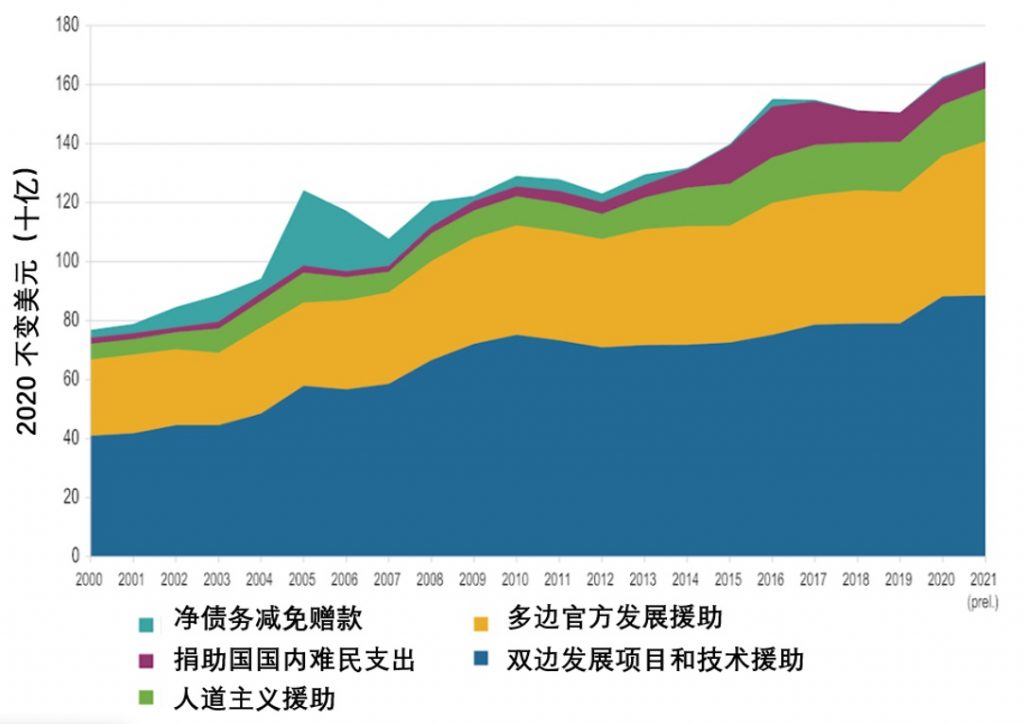
(OECD/Figure)
Donor countries have different patterns of spending on development aid.In 2021, there are differences in official development assistance expenditure patterns among DAC member countries. The increase in official development assistance in some countries has offset the reduction in the scale of development assistance in other countries, and the total global official development assistance has reached a record high. The official development assistance of the United States, Japan, Italy, Germany and other countries has increased significantly, while the official development assistance of the United Kingdom, Sweden, Norway, the Netherlands and other countries has declined.
Year-on-year changes in DAC national ODA from 2020 to 2021
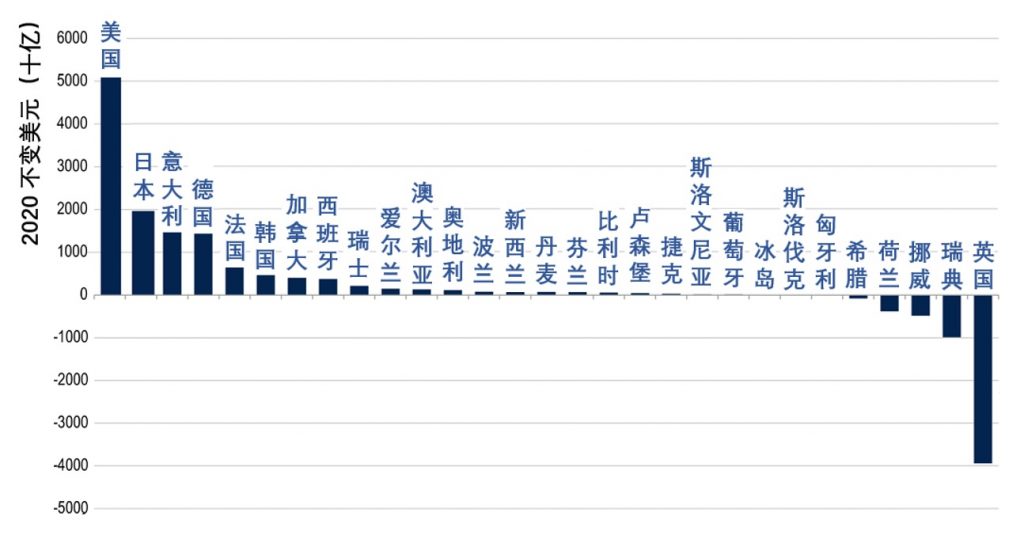
(OECD/Figure)
Aid is mainly used in social areas such as health.In 2020, official development assistance flows to all fields increased. Aid in the social field increased by 13%. Among them, aid used in the health and population fields actually increased by nearly 60%, mainly used to respond to emergency health challenges related to the epidemic. Social protection assistance expenditure increased by 162% compared with the previous year. In 2020, nearly half of the official development assistance flowing to the least developed countries was used to directly respond to the COVID-19 epidemic, especially health, budget support and humanitarian assistance.
Bilateral ODA flows among DAC countries in 2019-2020
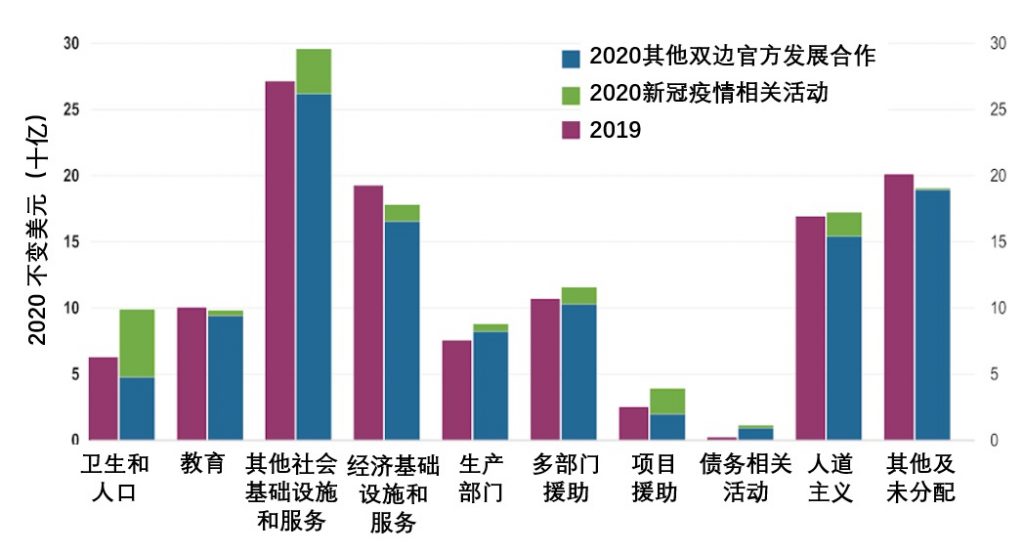
(OECD/Figure)
20% of epidemic aid went to ten countries.In 2020, 10 recipient countries including Indonesia, Bangladesh, and the Philippines received approximately 19% of COVID-19-related aid in the world. Globally, COVID-19-related aid mainly flows to Asia (USD 8.5 billion) and Africa (USD 8 billion).
Main recipients of COVID-19-related aid in 2019-2020
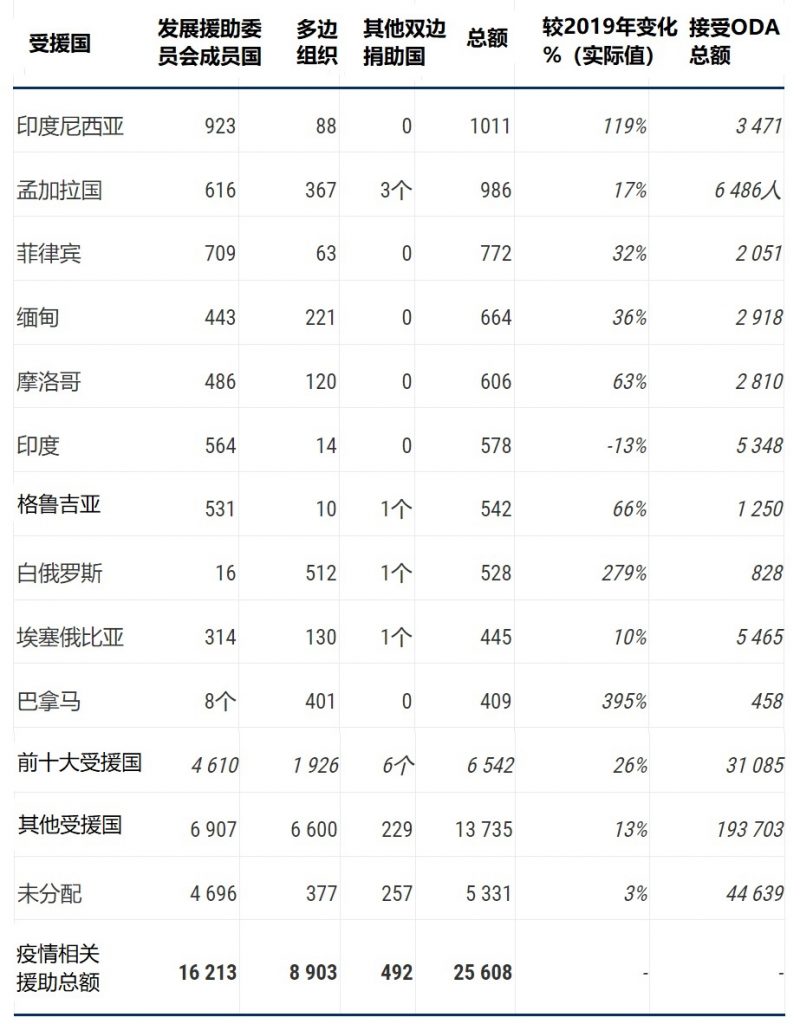
(OECD/Figure)
Forty percent of aid is provided through the governments of recipient countries.Of the bilateral official development assistance related to the COVID-19 epidemic, approximately 40% was provided directly through the governments of recipient countries, and approximately 30% was provided through multilateral organizations. United Nations agencies provided official development assistance in 20%, with nearly two-thirds channeled through the World Health Organization (WHO), the United Nations Children's Fund (UNICEF) and the World Food Program (WFP).
Bilateral ODA provision channels related to the epidemic in 2020
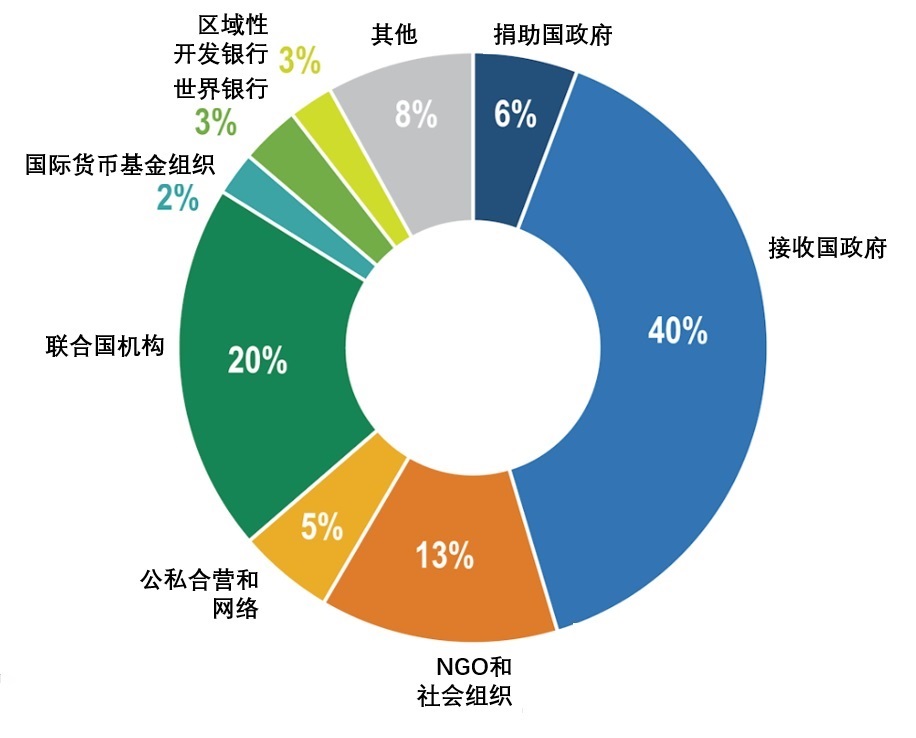
(OECD/Figure)
Conflict between Russia and Ukraine leads to refugee influx, aid to Ukraine surges
The conflict between Russia and Ukraine triggered the largest refugee flow in European history.According to data from the United Nations Refugee Agency (UNHCR), as of May 2023, approximately 8.26 million refugees have fled Ukraine, with more than half of them stranded in Europe. EU countries are facing the largest refugee influx in history. In 2016, the number of refugees seeking asylum in the EU reached a high of nearly 1.3 million, and EU donor countries' domestic refugee expenditures reached US$1.6 billion, accounting for 11% of the total official development assistance that year. After the conflict between Russia and Ukraine, the number of refugees in the EU increased to nearly four times that of 2016, and the cost of refugee resettlement services in European countries increased significantly.
Number of refugee applicants in the EU from 2010 to 2020 Vs
Number of Ukrainian refugees in the EU in 2022
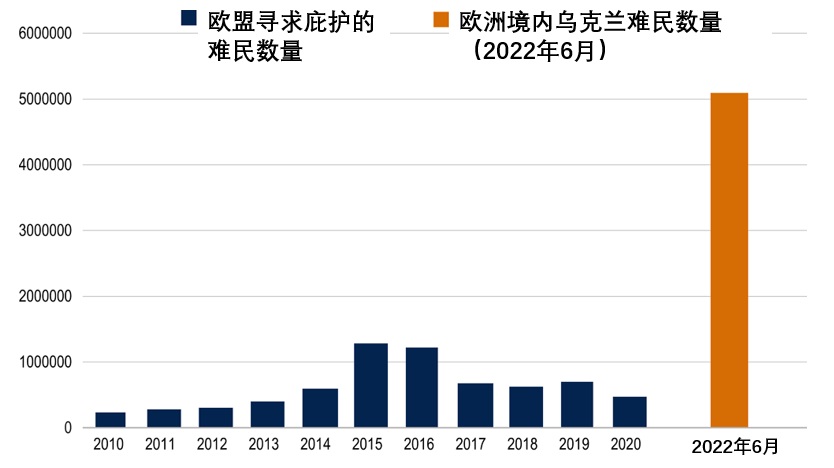
(OECD/Figure)
Aid to Ukraine has increased significantly, mainly multilateral aid.In 2020, Ukraine received US$255 million in official development assistance, an increase of approximately US$50% from the previous year. This growth is mainly driven by the European Union. Previously, aid from DAC countries to Ukraine peaked in 2015. Nearly 70% of official development assistance to Ukraine comes from multilateral agencies. Among them, general budget support and infrastructure funds provided by EU institutions accounted for 79%. In 2020, the United States and Germany were the countries providing the largest official development assistance to Ukraine among DAC members.
ODA to Ukraine by DAC countries and multilateral institutions from 2012 to 2020
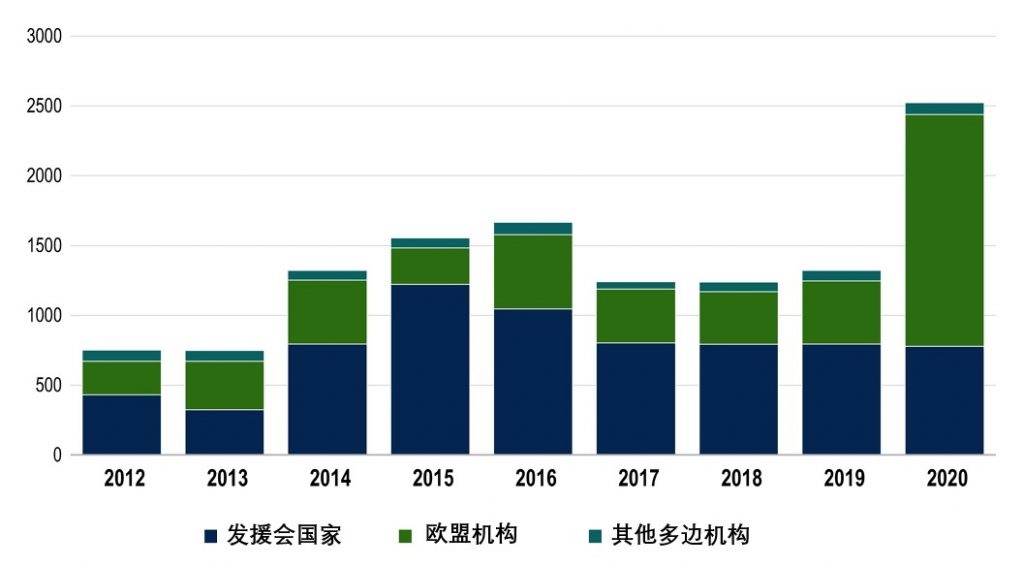
(OECD/Figure)
Ukraine's reconstruction and recovery is expected to be costly.Ukraine has suffered huge economic losses from the Russian-Ukrainian conflict. The future development and duration of the Russian-Ukrainian conflict will have a huge impact on the costs of reconstruction and recovery in Ukraine. Ukraine's post-war reconstruction and recovery costs will far exceed the official development assistance support it has received in recent years.
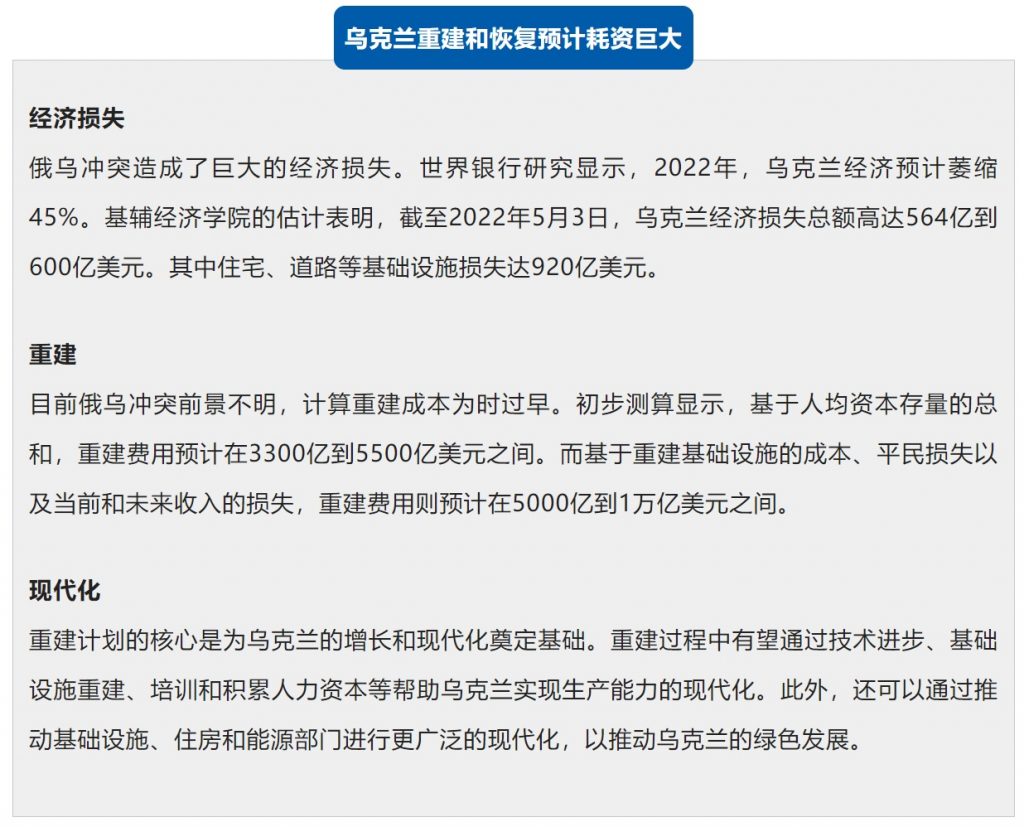
Assistance resources for other development needs may be affected.As of June 2022, DAC members have pledged $46 billion in financial and humanitarian assistance to Ukraine. This amount amounts to 25.7% of total official development assistance in 2021. OECD member countries are stepping up new and additional aid to Ukraine and Ukrainian refugees to alleviate deepening food insecurity, hunger and extreme poverty around the world. Fulfilling these and other development commitments will drive higher official development assistance levels in 2022. However, as donor countries and institutions provide massive assistance to Ukraine, many donor countries are caught in the dilemma of reallocating aid resources and are forced to balance between supporting Ukraine and supporting other developing countries and development goals, and between supporting urgent humanitarian needs and supporting long-term Hard choices were made between post-war reconstruction.
DAC countries’ aid commitments to Ukraine and refugee expenditures in 2022
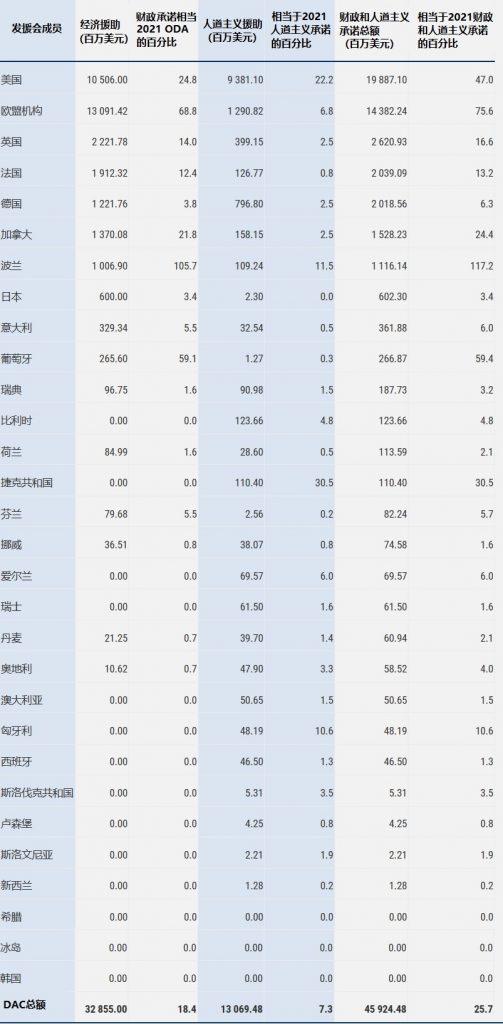
(OECD/Figure)
The surge in official development assistance to Ukraine may lead to other developing countries and global crises being forced to face insufficient development assistance and humanitarian resources. The international community needs to carefully manage the risk that budgets and programs in countries most in need of assistance, and the Sustainable Development Goals, may be crowded out by emergencies and crises. Private funds, other official funds, and development assistance providers outside the DAC should also step up their efforts to provide development finance to meet the huge needs.
ODA is a valuable resource urgently needed by the least developed countries and the poorest people, and needs to be allocated where it is needed most. The increasingly complex crises and potential crises around the world once again raise an important question:How to balance urgent needs, long-term crises and commitment to long-term development goals?
References
https://www.oecd-ilibrary.org/sites/223ac1dd-en/index.html?itemId=/content/component/223ac1dd-en

All rights reserved, please indicate the source when citing.
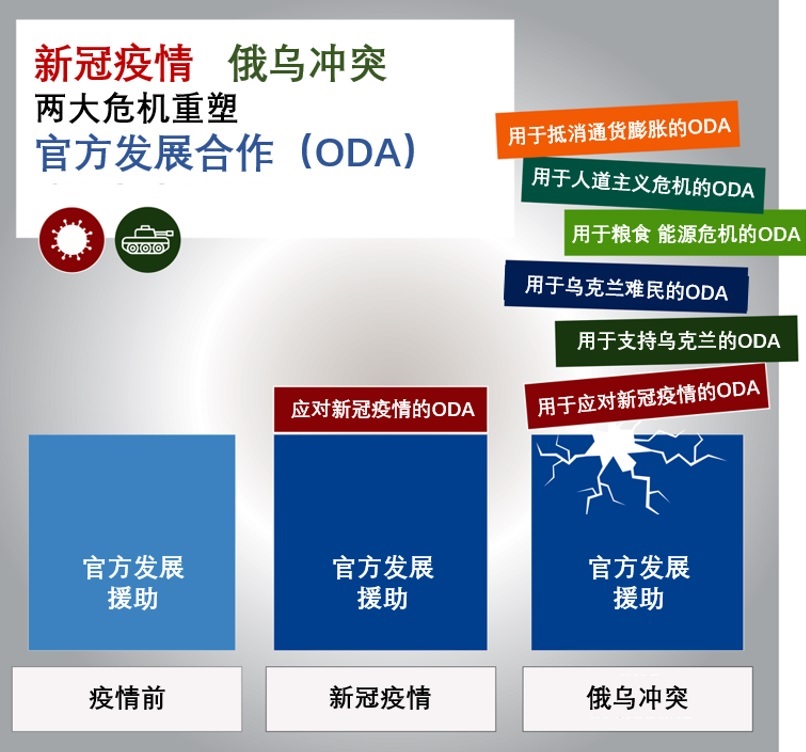
Comment (1)
Philippines Special Power of Attorney| January 17, 2024
This is a very well thought out webpage. Very engaging and a great read.